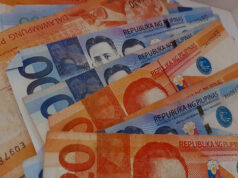$1B in ‘hot money’ flees country in May

By Luz Wendy T. Noble, Reporter
FOREIGN CAPITAL worth $1 billion exited the Philippines in May, the biggest net outflow in more than six years as the ongoing coronavirus crisis prompted investors to seek safer havens.
Bangko Sentral ng Pilipinas (BSP) data released on Thursday showed foreign portfolio investments — or “hot money” due to the ease by which these funds enter and exit an economy — yielded a net outflow for the third straight month of $1.006 billion.
The May figure is a third higher than the $749.84 million net outflow seen a year ago, and nearly double the $660.38 million in April. It is also the largest since the $1.844 billion net outflow posted in January 2014.
This pulled the five-month tally to a $3.073 billion net outflow, significantly wider than the $685.27 million recorded during the same period in 2019.
The BSP forecasts to end the year with a $2.4 billion net inflow of foreign portfolio investments, a more pessimistic outlook from the $8.2 billion net inflow projection given in November 2019.
Investor sentiment was likely dented by the ongoing coronavirus disease 2019 (COVID-19) pandemic and its impact on the global economic and financial system, the BSP said.
During the first five months of the year, the BSP said key events included the US-Iran geopolitical tensions, continued trade negotiations between Washington and Beijing, and the discussions on the country’s water concessionaire contracts.
In May, inflows amounted to $486.26 million, much lower than the $1.237 billion in the prior year and also down from the $627.02 million seen in April.
Meanwhile, outflows reached $1.492 billion, lower than the $1.987 billion in May 2019 but higher than the $1.287 billion in the previous month.
“The United Kingdom, the United States, Singapore, Hong Kong and Luxembourg were the top five investor countries for the month, with combined share to total at 88.1%,” the BSP said.
The central bank said 88.3% of registered investments in May went into the stock market, particularly shares in property companies, holding firms, banks, retailers, and telecommunications firms. Meanwhile, the rest or 11.8% were channeled into investments in government securities.
ING Bank N.V. Manila Senior Economist Nicholas Antonio T. Mapa said the lockdown and weaker growth prospects took its toll on investor sentiment in May.
“Portfolio outflows were recorded in May with the country under a hard lockdown and growth prospects dimming. Expectations for a recession by Q2 may have spooked investors with foreign investors generally net sellers for most of the month,” Mr. Mapa said in an e-mail.
The country’s gross domestic product (GDP) already fell by 0.2% in the first quarter of the year and a deeper decline in Q2 put the Philippines under a technical recession, or two successive quarters of economic contraction. Due to the economic fallout from the virus outbreak and the resulting lockdown, the government projects GDP to contract by 2-3.4% this year before growing by 8-9% by 2021.
Moving forward, investor sentiment may have gotten a slight boost as some restrictions have been lifted, according to Michael L. Ricafort, chief economist at Rizal Commercial Banking Corp.
“The worst in economic data may have already been seen at the height of the lockdowns in April to May…unless there would be a risk of a second wave of new COVID-19 infections as economies reopen until a vaccine is developed,” he said in a text message.
“We could see bouts of inflows during times of optimism over a quick economic recovery but sentiment appears to be very fragile, affected in large part by fears of a COVID-19 lockdown part two and a US-China trade war,” Mr. Mapa added.



